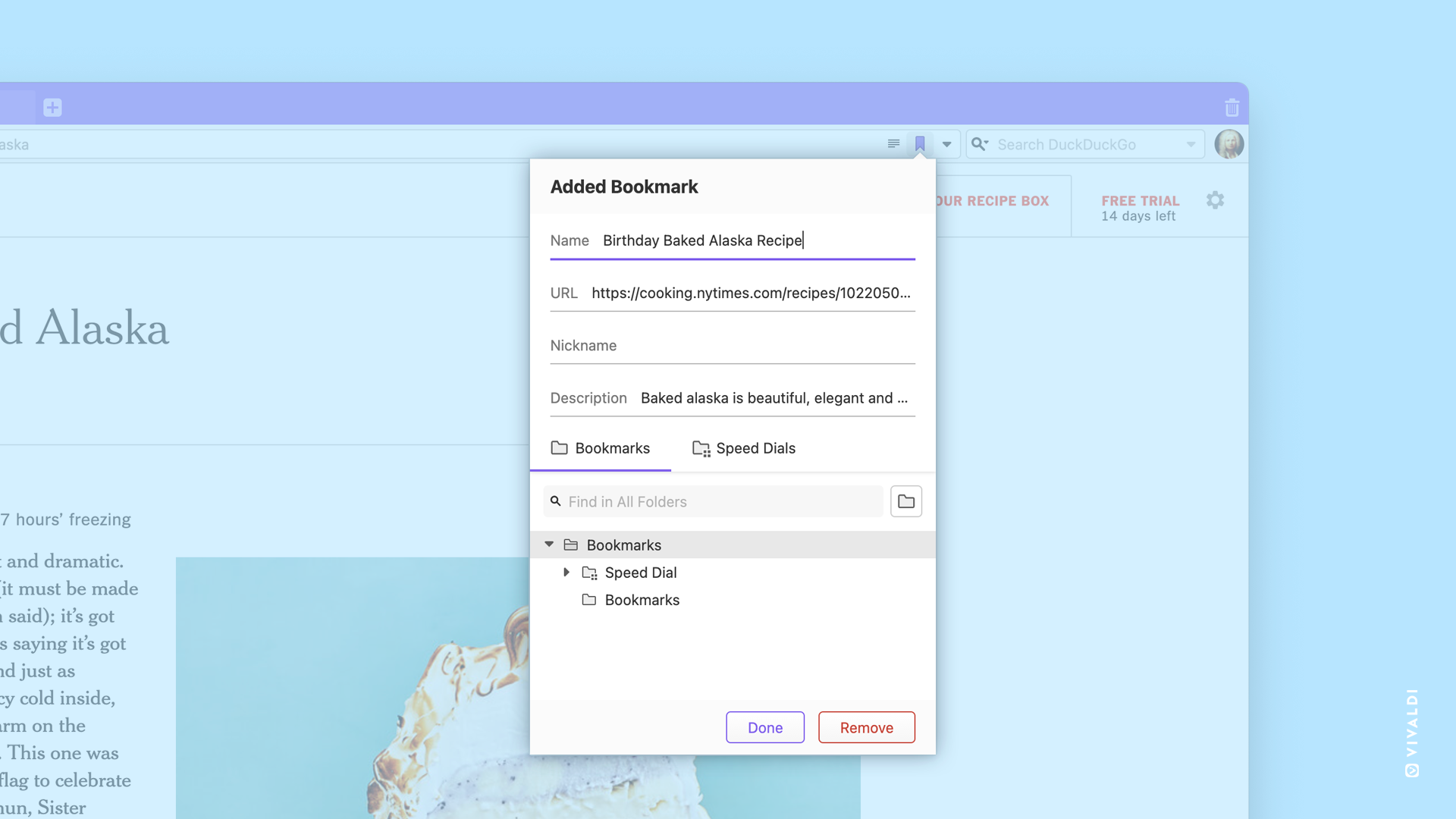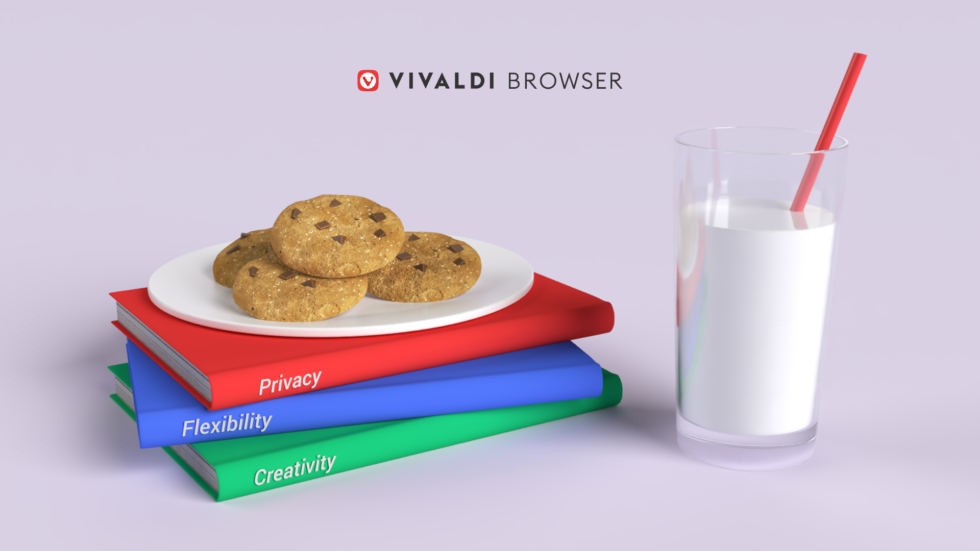
OSLO, Norway – April, 29th, 2021: There are browsers, and then there is Vivaldi. Going against the grain is something that Vivaldi takes pride in. It gives users plenty of features while protecting their privacy.
In the latest version, there’s a new option to block cookie dialogs and banners that will help save time and unnecessary clicks, so that users can get on with what they came for – browsing.
Vivaldi continues to tackle privacy issues plaguing the internet such as data collection, user tracking, and profiling including FLoC, Google’s latest privacy-invasive technology.
Vivaldi’s signature Panels are now more customizable with a design overhaul and fresh options that will spice up the look of the browser and how users interact with it. There are also new quicker bookmarking options.
Vivaldi 3.8 is now available for free download on Windows, macOS, and Linux computers.
“If you want it to work in a certain way – and it’s something we can reasonably do – we tend to do it. This is a simple approach that helps us focus on your privacy, productivity and the way you interact with your browser,” Vivaldi CEO Jon von Tetzchner says.
The Cookie Crumbler: Vivaldi’s cookie warning blocker

Do cookie dialogs drive people insane? In this new version, Vivaldi reduces annoying cookie dialogs and banners by miles.
For many, incessant cookie dialogs and banners are the new scourge of smooth browsing. While the purpose of the EU’s GDPR to protect users from tracking websites is noble, it has its side effects. Instead of avoiding using trackers and tracking ads, many websites bother users to manage their cookie preferences before allowing access to the content.
Users are often required to click on multiple steps to manage such cookies, including hidden options, a dialog on every single page, or at times no way to deny them at all. Naturally, this makes for a frustrating browsing experience.
This leads to clicking “allow” or “accept” without realizing that unwittingly users just gave permission for trackers to create behavioral profiles about them.
Often, these clicks happen due to the fact that a website may not work without accepting the cookie dialog. Vivaldi does not believe that this should be considered “consent”, and this tactic should not be allowed at all.
That is why, in this update, Vivaldi lets the cookie dialogs crumble!
How?
Now users do not have to rely on extensions and can block a majority of these pestering dialogs and enjoy faster browsing through an option in Vivaldi’s built-in Ad and Tracker Blocker when enabled.
While Vivaldi evaluates ways to make the Cookie Crumbler available in its user interface, and determine if it can be enabled by default, it can be given a try. Go to Vivaldi’s menu — Settings — Privacy — Tracker and Ad blocking — Manage Sources — Ad blocking sources and enable the “Remove cookie warnings” lists.
This will simply block the service that asks for consent or hides the consent dialog, in the same way as it might remove a tracker or an ad.
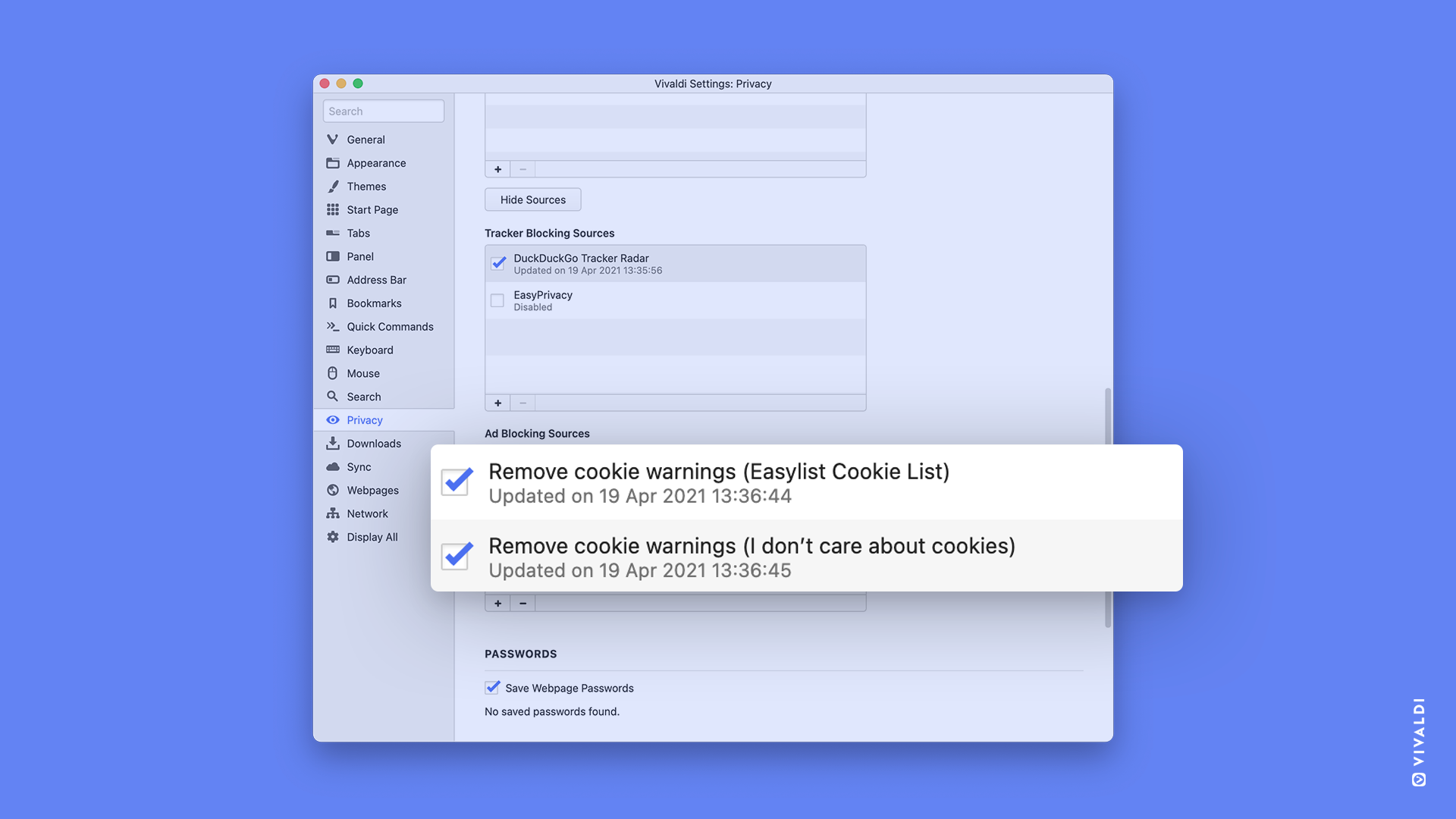
This feature is based on the regularly updated third-party block lists — EasyList Cookie List and “I Don’t Care About Cookies‘. While Cookie Crumbler works on most of the websites, this is not a perfect solution, as there will be a few websites that use other tactics to obtain cookie consent. Please note that some sites may not let users in at all and may not work as expected as they actually require cookie consent for some functionality but you can disable the ad blocker in Vivaldi on those sites to disable the Cookie Crumbler.
FLoC no, in Vivaldi. User privacy is paramount
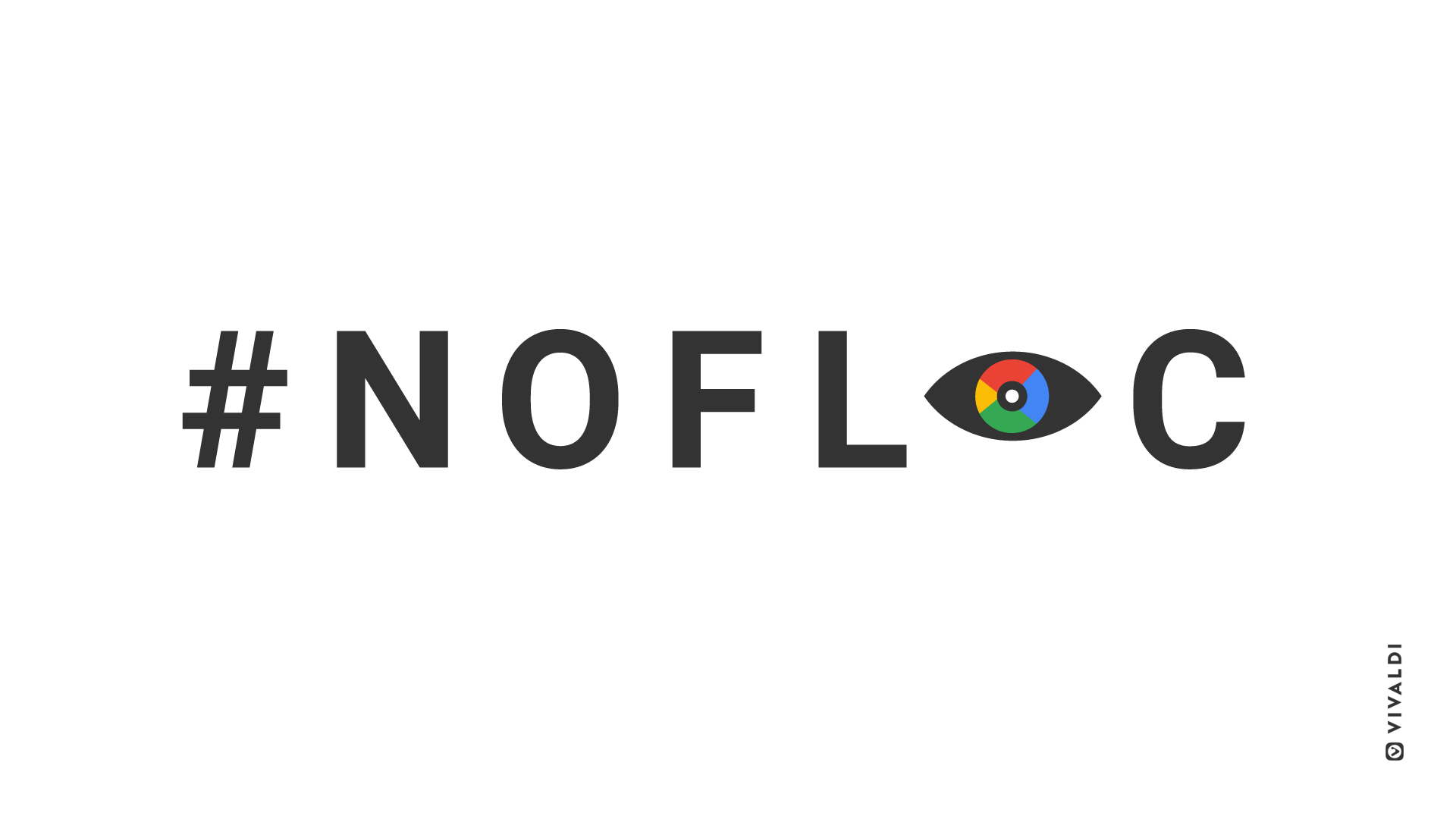
Unlike some browsers that track every step of a user’s online activity, Vivaldi does the opposite. No data collection. No user profiling. Not even tracking of product features used in Vivaldi.
In fact, Vivaldi keeps track of technologies that are harmful to user privacy. One such privacy-invasive technology is FLoC by Google, which builds profiles, and tracks users, in the absence of third-party cookies.
As FLoC has privacy risks, the FLoC component has been blacklisted from this update onwards. This means it will not be downloaded and will be removed if it has already been downloaded.
In the previous versions of Vivaldi, Google’s FLoC experiment was prevented from working by not setting the hidden settings that it needed in order to run.
Note: Users may still see a “FLoC” folder in their profile if they previously used a version where the component was installed, but this folder will not contain any profiling data since the feature never worked in Vivaldi, and it can be safely deleted or ignored.
Panels redesigned. Light, fresh and shiny
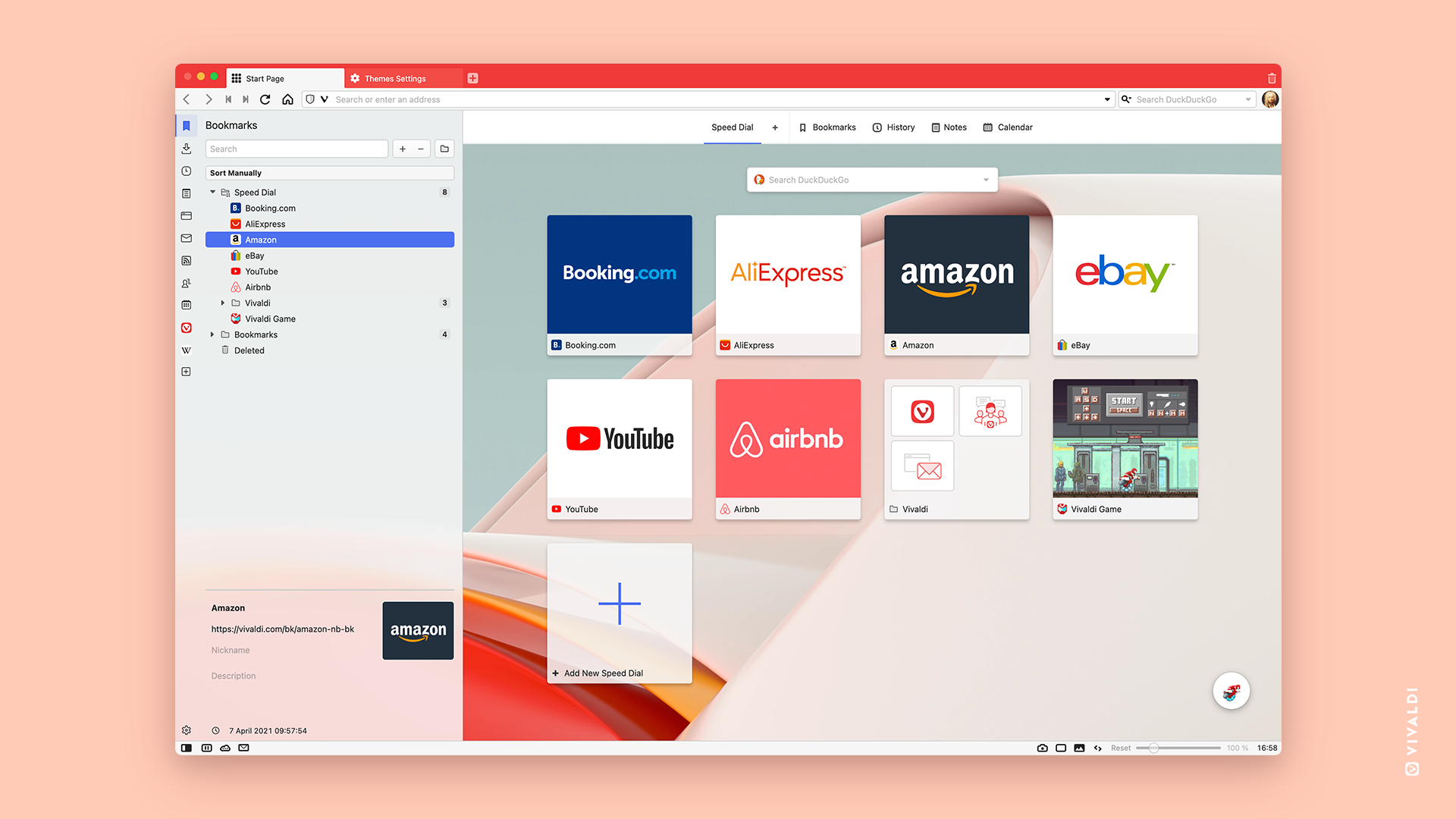
New slick icons. No borders. The content now shines through the Panels. Literally.
Vivaldi Panels have been rebuilt.
Adding flair and personal style to a product that is used every day is natural and, really, what Vivaldi is about. The design overhaul of Vivaldi’s Panels puts users on top of working with essential tools such as Bookmarks, Downloads, Notes, History, Window Panel, and Web Panels.
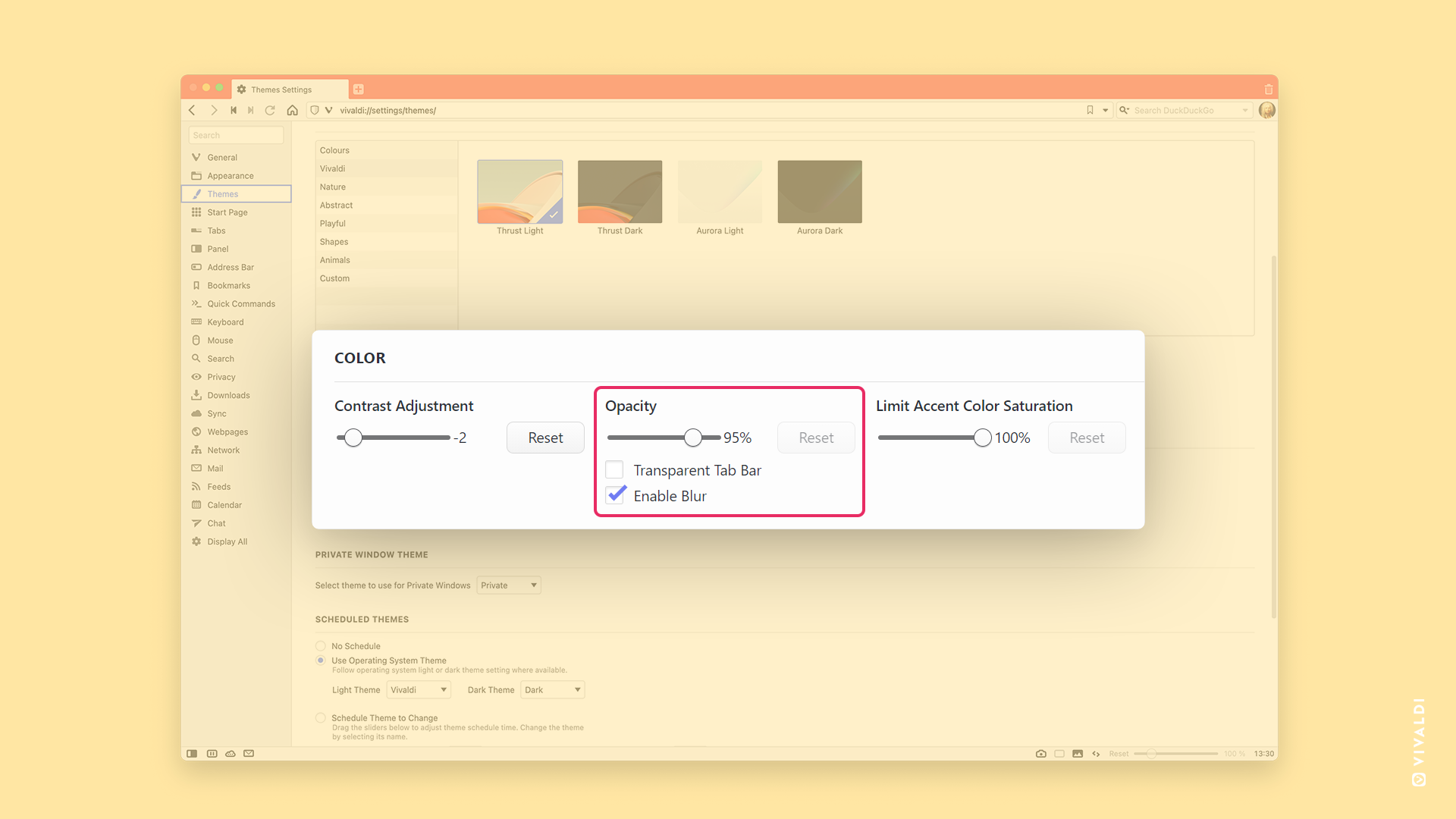
The new design upgrade in Vivaldi 3.8 makes the whole Panel transparent on top of the background image of the user’s choice. These new options make the browser visually stunning:
- Opacity for the Panel background: Once the opacity setting is enabled, the image is shown through the Start Page Background. This setting also affects the Speed Dial Title background.
- Frosted look: Enable or disable blurring of the Panel background to get that “frosted” look.
- Transparent Tab Bar: When enabled, the colored area behind the tabs can be completely removed. This allows the background image to show through here as well, completely covering the browser window. The Tab Bar area is also affected by the Blur setting.
If users prefer to stick to the way Panels were before, simply set the opacity to 100% and disable the Transparent Bar.
The Start Page Background settings have been moved to the Themes category. Now it is easier to find a good image that fits the current theme in use, and the best possible matching settings (colors, images, and opacity).
Rediscover the magic of Bookmarks
In Vivaldi 3.8, more powerful and quicker ways to add bookmarks come in. By pressing CTRL/CMD + D, bookmarks are instantly added without the need to open the dialog at all. Easy.
If users do want to open the dialog (by clicking the Bookmark button in the Address Bar), there are a lot of new choices:
- Quickly filter between regular bookmark folders and speed dials folders
- Search for an existing bookmark folder or create a new one directly in the dialog.
- A complete tree-view, with all folders available to expand and collapse
Other new bits in Vivaldi 3.8
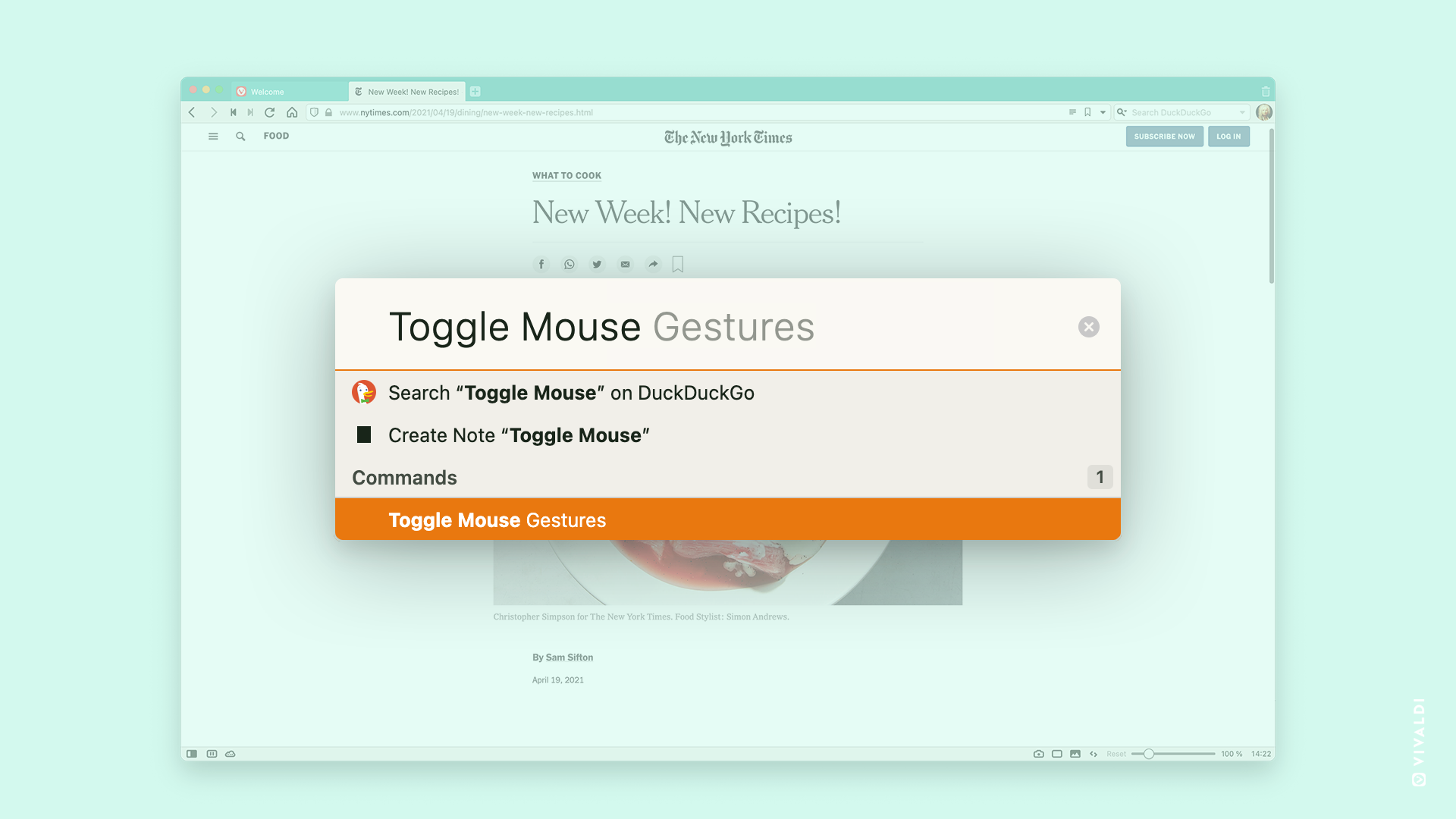
- Disable Mouse Gestures: Just like Keyboard Shortcuts, Mouse Gestures can now be turned on and off in Quick Commands.
- Add ‘Extensions’ to Quick Commands: The previous version bolded the keyword when searched for in Quick Commands. From now on, users can now open extension pop-ups through Quick Commands by just typing in the extension’s name.
